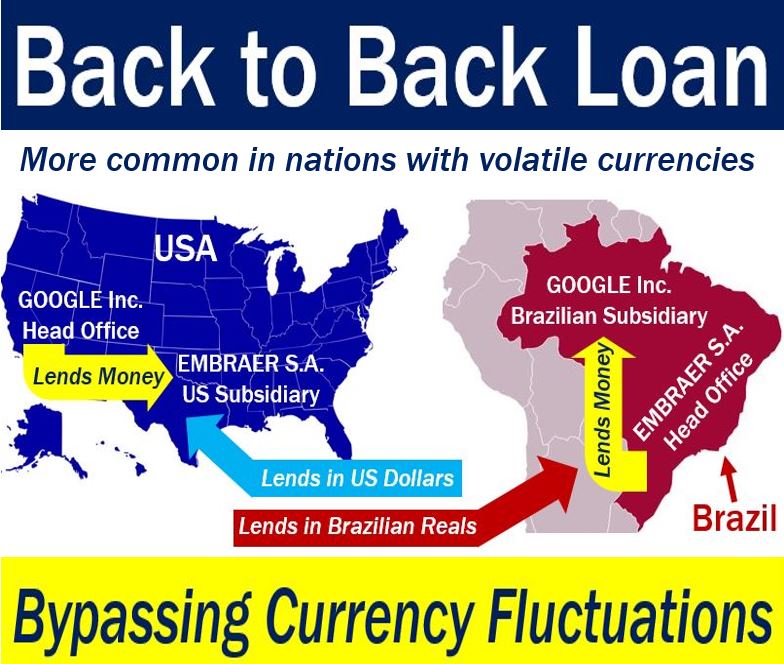Back-to-back refers to anything, such as a document, in which all the features mirror the next document. For example, if we open a back-to-back letter of credit, it has the same features as the previous one. In other words, everything in this document mirrors the one we created before.
Trade intermediaries use a back-to-back document to open a second credit in favor of a seller (supplier).
In construction, back-to-back refers to houses built in a continuous terrace. That is, the houses’ backs are against each other. Britons use the term in this context more frequently than English speakers in North America.
Back-to-back can also mean consecutive, as in: “His back-to-back victories in the US Open, French Open, and the Wimbledon tennis championships.”
We commonly used the term in graphs. For example, in a W-shaped recovery, there are back-to-back rises and declines in economic activity.

Back-to-back loan
A back-to-back loan is one in which two firms in different countries borrow each other’s currency. They borrow their currencies for a specific length of time. The two companies subsequently repay the other’s currency on a certain date.
Imagine there are two companies: John Doe Inc. in the USA and Smith Plc. in the UK. John Doe lends $100,000 to Smith’s subsidiary in the USA. Then Smith lends $100,000’s worth in pounds sterling (£77,000) to John Doe’s subsidiary in the UK. The advantage of this system is that it does away with the concept of currency fluctuations.
The UK/US example was just for illustration. In fact, in most cases, this type of loan occurs in economies with volatile currencies.
Back-to-back lease
A back-to-back lease is an agreement a tenant makes with a landlord. The landlord agrees to take over the tenant’s current lease in return for the tenant’s agreement.
Tenants and landlords do this so that landlords can lease existing space in their commercial buildings. Therefore, the back-to-back lease acts as a concession to the prospective tenant.
In this type of lease agreement, the tenant can vacate the property immediately. The landlord will pay the tenant’s rent at the old space until the term expires.

Construction contracts
Back-to-back construction contracts are common today, especially in large construction projects. The principal contractor tries to pass its liabilities and obligations towards the project owner through its subcontractors.
Major international construction projects commonly require the collaboration of a large number of participants. Each participant has a different capability.
The project owner prefers to have a single contractual relationship with the main contractor rather than each participant individually.
For the project owner, it is simpler to have just the main contractor as the single point of responsibility.
Understandably; the main contractor does not like being solely responsible for all the aspects of the project. Therefore, it will try to pass on its liabilities to its subcontractors. By doing this, the main contractor can even out its obligations exposure.
The main contractor does this by arranging back-to-back contracts with the subcontractors.
